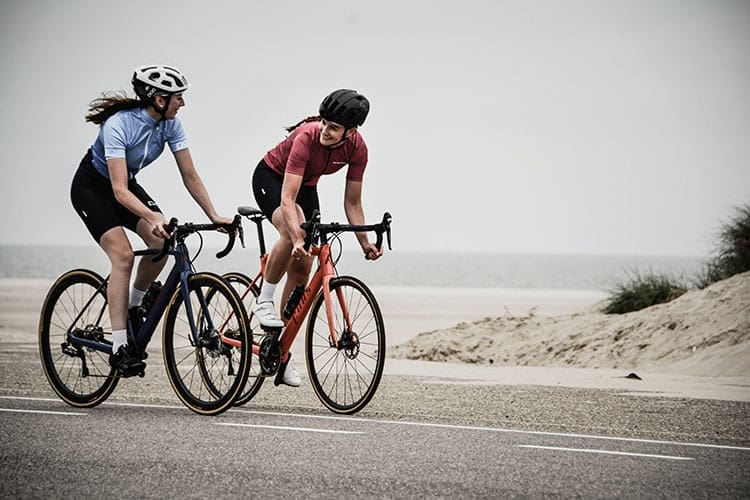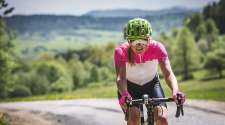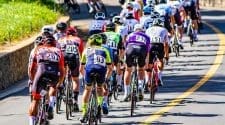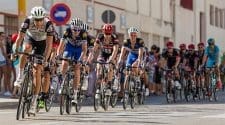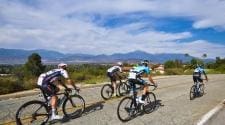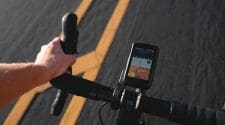As a cyclist, whether your thing is the weekend country ride, a sweaty indoor trainer session, or just your local hill loop, you know that your work doesn’t stop when you step off the bike. Recovery is actually where the real work begins.
The way you treat your body in the hours immediately following your cycling session will determine how strong and ready you are for your next time in the saddle.
In this article, we’ll discuss the four essential 4 Rs that should make up your post-ride recovery checklist as a cyclist. Whether you cycle only on weekends or you’re a professional cyclist, these strategies will help you stay sharp, healthy, and always ready to roll.
Rehydrate: Replace Fluids and Electrolytes
Cycling, like every other sport, is a sweaty business. Even on cool days, you cannot ride for any reasonable length of time without losing fluids.
We’re not just talking water here. You’ll also sweat out crucial minerals called electrolytes, which are vital for everything from nerve and muscle function to balancing your body’s pH levels, blood pressure, and more.
This is why you need to rehydrate immediately post-ride. A good idea is to start sipping water 20–30 minutes after your ride. But if you rode long or hard, plain water may not be sufficient. Maybe have a pre-mixed recovery drink, such as an electrolyte tablet in a bottle of water, ready. This would help you replace what you’ve sweated out.
Pro tip: weigh yourself before and after a long ride. For every pound you lose, drink about 16 – 24 ounces of fluids to keep your system balanced and bounce back faster.
Refuel: Replenish Lost Energy
Ever notice how your legs feel sluggish and heavy, hours or maybe the next morning, after a hard ride? That’s your muscles screaming out for glycogen.
Here’s the thing: when you ride, your body uses up its store of energy, and you have to replenish it. Experts recommend a system of a 3:1 or 4:1 ratio of carbs to protein within 20-60 minutes of finishing. The carbs will restock your glycogen while the protein kickstarts the repair of damaged muscle cells.
You don’t need a full four-course meal to achieve this. A glass of chocolate milk. A smoothie with fruit and protein powder. A banana with a handful of nuts. Any of these will work perfectly. The goal is to get the calories back in, especially carbs and protein, so that you replenish lost energy and start your body’s repair process.
Repair: Support Muscle Recovery and Reduce Soreness
After a hard ride, you typically feel pain in your legs and calves. Known as Delayed Onset Muscle Soreness or DOMS, this happens as a result of tiny tears in your muscle fibers. Quite normal, but it also means your body needs the right support to heal, which brings us to the next R: repair.
A key element in this repair process is protein — lean meats, eggs, dairy, beans, and even tofu, all of which provide the foundation for muscle repair and recovery.
But food alone won’t carry you across the recovery finish line. In addition to protein-rich meals:
- Use a foam roller (if you have one) to loosen up your tight quads and calves.
- Do some light movement to keep the blood flowing to clear out waste.
- Take contrasting showers (alternating hot and cold) to relax sore muscles and reduce inflammation.
Sometimes, though, it’s not about soreness or your muscles needing recovery, but also about actual injuries from a bicycle accident. A distracted driver, a slick patch of road, or a sudden obstacle can lead to crashes that cause far more than simple soreness.
Cases like these go beyond stretches and cold or hot showers. As Freeman Law Firm points out, bicycle crashes bring a unique set of challenges, often occurring in a blur but leaving long-lasting effects. It may require medical attention, rest, and you may want to consider speaking to someone to understand your rights.
The bottom line is that whether it’s post-ride soreness or something more serious, your repair phase is about giving your body the care it needs so you can get back in the saddle, ready for the next ride.
Rest: Prioritize Sleep and Recovery Time
This last R is the one most cyclists ignore, but it’s no less important. You can nail the first three Rs, but if you don’t take enough time to rest, you’ll be sabotaging your entire recovery process. Why? Because when you sleep is when your body does its most important repairs, so that you can get back to being your best.
There’s more, too. According to research, athletes who sleep less than the recommended 7 to 9 hours per night are more prone to injuries. So, even if you feel absolutely fine, scrimping on sleep puts you at risk of poor performance, slower recovery, and even more injuries.
This means that you should not treat your sleep as optional. Pretend like it’s a part of your training strategy and keep to expert-recommended hours.
Final Thoughts
Improving as a cyclist isn’t always about pushing harder. Sometimes, it’s about recovering smarter, so that you can hit the next one just as hard, and that’s what these four Rs will help you achieve.
Start implementing them today in your routine, and you’ll see just how much cycling can be when your body and mind are at their best.
No products found.



